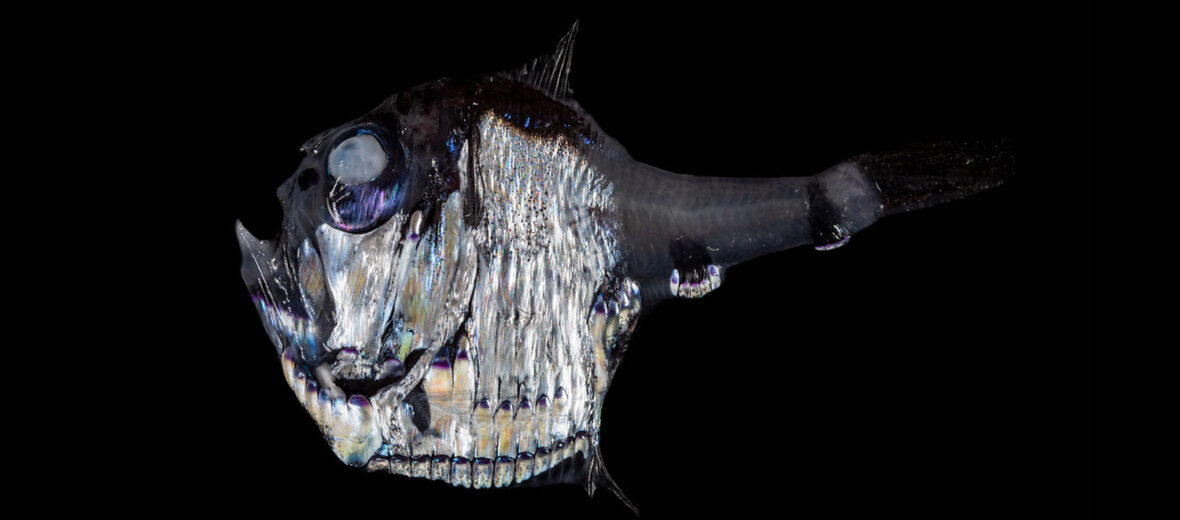
Marine hatchetfish are found in tropical, subtropical, and temperate waters of the Atlantic, Indian, and Pacific Oceans. The largest density of these odd fish reside in the waters off of Central and South America. Marine hatchets are all listed as either Least Concern or Data Deficient by the IUCN. Their populations are all seemingly stable… for now. But climate change and pollution affect them, as it does all marine life.
First the Stats…
Scientific name: Sternoptychinae
Weight: Up to 2+ ounces
Length: Up to 6 inches
Lifespan: Up to 1 year
Now on to the Facts!
1.) There are 45 known species of marine hatchetfish.
2.) These fish can be found at depths of up to 4,500 feet.
3.) Marine hatchetfish have bioluminescent organs along their abdomens, called photophores, that produce a pale blue light. This aids in camouflaging them from predators.
4.) Each species of hatchetfish has the ability to produce different patterns of light and the light emitted matches the light from above to help keep them hidden from attacks from below. This is called counterillumination.
5.) They feed on tiny crustaceans and zooplankton.
But wait, there’s more on the marine hatchetfish!
6.) Hatchetfish are nocturnal (active at night).
7.) Females release a large amount of eggs into the water that are then fertilized by the males. This is called broadcast spawning.
Did you know…?
All known hatchetfish are able to jump from the water. This is done to catch prey and to avoid predation.
8.) A marine hatchetfish’s eyes are bulbous and perfectly adapted to low light. They are able to make out even the faintest shadows of prey items.
9.) Some portions of hatchetfish are also transparent. This also helps make them almost invisible in the water.
10.) Tuna, viperfish, and lancetfish prey on hatchetfish.
Now a Short Marine Hatchetfish Video!
Be sure to share & comment below! Also, check out the Critter Science YouTube channel. Videos added frequently!
Want to suggest a critter for me to write about? Let me know here.



